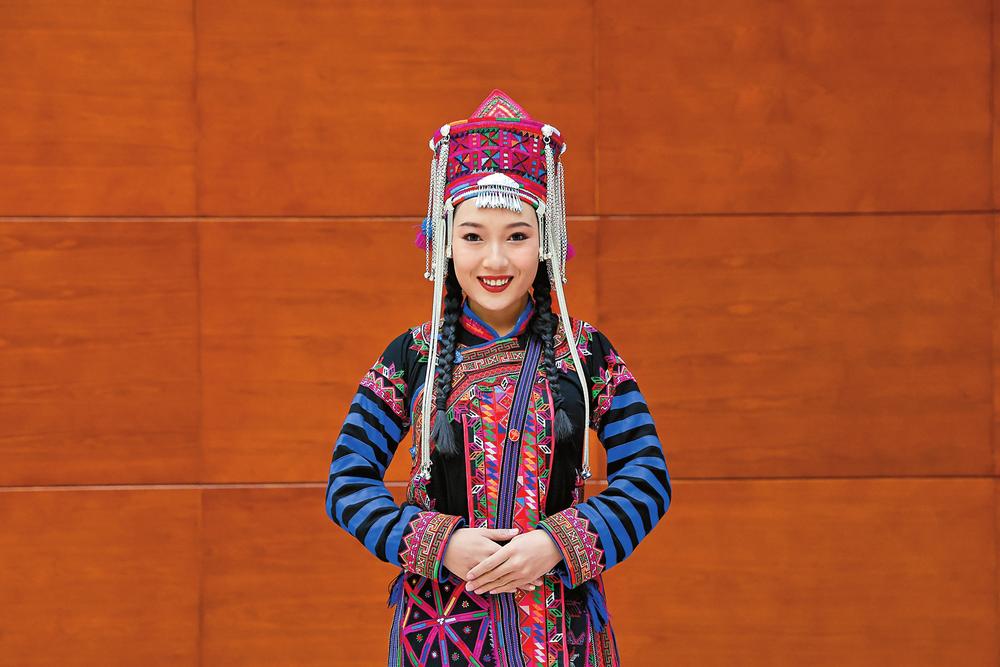

For Yang Yuni, a 27-year-old member of the 14th CPPCC National Committee, teaching Hani kids the dance and songs of their ancestors is a fun, sustainable way to protect the millennia-old Hani rice terraces, a UNESCO world heritage site, in Honghe Hani and Yi autonomous prefecture in Southwest China’s Yunnan province.
“The rich Hani culture has given birth to some folk art forms which were listed as national intangible cultural heritages. I had been thinking if we could leverage our folk art to better protect our rice terraces,” said Yang, a member of the Hani ethnic group.
In 2014, Yang was admitted into the Qi Baishi School of Art at Hunan University of Science Technology where she majored in dance. This made her the first student in her county to study at a key university.
In her spare time, Yang visited various local artists to learn Hani multi-part folk singing and Lezuo dancing – both are national cultural heritages. At the age of 20, she founded an art education center in her hometown and has since dedicated herself to teaching local children folk songs and dances that are unique to the Hani people.
Yang has also been a volunteer teacher for many local primary schools where she gives regular classes on Hani song and dance. “We incorporate Hani song and dance into lively, rhythmic dance movements so that they are more appealing to kids”, she shared.
Over the years, Yang has trained more than 3,000 kids and more than 50 students have been admitted into universities because of their artistic skills.
“Compared with giving performances on my own, I prefer teaching hometown kids our ethnic song and dance so that they can become inheritors. One day they will leave the mountainous villages and perform on bigger stages where they can confidently showcase our Hani culture,” said the political advisor.
This year marks Yang becoming a national political advisor for the first time. At the two sessions, she suggested more efforts be spent on tapping into the Hani farming culture to find effective methods for the green and sustainable development of the Hani rice terraces as a living heritage site.